IEEE Std 1905.1 Front Cover
Title Page
Notice to users
Laws and regulations
Copyrights
Updating of IEEE documents
Errata
Patents
Participants
Introduction
Contents
Figures
Tables
Important Notice
1. Overview
1.1 Scope
1.2 Purpose
2. Normative references
3. Definitions, acronyms, and abbreviations
3.1 Definitions
3.2 Acronyms and abbreviations
4. General description
4.1 Introduction
4.2 IEEE Std 1905.1 overview
4.2.1 Benefits of IEEE Std 1905.1
4.3 IEEE 1905.1 architecture
4.4 Abstraction layer
5. IEEE 1905.1 abstraction layer management entity
5.1 AL management specific service (ALME-SAP)
5.1.1 ALME-GET-INTF-LIST.request
5.1.1.1 Function
5.1.1.2 Semantics of the service primitive
5.1.1.3 When generated
5.1.1.4 Effect of receipt
5.1.2 ALME-GET-INTF-LIST.response
5.1.2.1 Function
5.1.2.2 Semantics of the service primitive
5.1.2.3 When generated
5.1.2.4 Effect of receipt
5.1.3 ALME-SET-INTF-PWR-STATE.request
5.1.3.1 Function
5.1.3.2 Semantics of the service primitive
5.1.3.3 When generated
5.1.3.4 Effect of receipt
5.1.4 ALME-SET-INTF-PWR-STATE.confirm
5.1.4.1 Function
5.1.4.2 Semantics of the service primitive
5.1.4.3 When generated
5.1.4.4 Effect of receipt
5.1.5 ALME-GET-INTF-PWR-STATE.request
5.1.5.1 Function
5.1.5.2 Semantics of the service primitive
5.1.5.3 When generated
5.1.5.4 Effect of receipt
5.1.6 ALME-GET-INTF-PWR-STATE.response
5.1.6.1 Function
5.1.6.2 Semantics of the service primitive
5.1.6.3 When generated
5.1.6.4 Effect of receipt
5.1.7 ALME-SET-FWD-RULE.request
5.1.7.1 Function
5.1.7.2 Semantics of the service primitive
5.1.7.3 When generated
5.1.7.4 Effect of receipt
5.1.8 ALME-SET-FWD-RULE.confirm
5.1.8.1 Function
5.1.8.2 Semantics of the service primitive
5.1.8.3 When generated
5.1.8.4 Effect of receipt
5.1.9 ALME-GET-FWD-RULES.request
5.1.9.1 Function
5.1.9.2 Semantics of the service primitive
5.1.9.3 When generated
5.1.9.4 Effect of receipt
5.1.10 ALME-GET-FWD-RULES.response
5.1.10.1 Function
5.1.10.2 Semantics of the service primitive
5.1.10.3 When generated
5.1.10.4 Effect of receipt
5.1.11 ALME-MODIFY-FWD-RULE.request
5.1.11.1 Function
5.1.11.2 Semantics of the service primitive
5.1.11.3 When generated
5.1.11.4 Effect of receipt
5.1.12 ALME-MODIFY-FWD-RULE.confirm
5.1.12.1 Function
5.1.12.2 Semantics of the service primitive
5.1.12.3 When generated
5.1.12.4 Effect of receipt
5.1.13 ALME-REMOVE-FWD-RULE.request
5.1.13.1 Function
5.1.13.2 Semantics of the service primitive
5.1.13.3 When generated
5.1.13.4 Effect of receipt
5.1.14 ALME-REMOVE-FWD-RULE.confirm
5.1.14.1 Function
5.1.14.2 Semantics of the service primitive
5.1.14.3 When generated
5.1.14.4 Effect of receipt
5.1.15 ALME-GET-METRIC.request
5.1.15.1 Function
5.1.15.2 Semantics of the service primitive
5.1.15.3 When generated
5.1.15.4 Effect of receipt
5.1.16 ALME-GET-METRIC.response
5.1.16.1 Function
5.1.16.2 Semantics of the service primitive
5.1.16.3 When generated
5.1.16.4 Effect of receipt
5.2 AL data (MSDU) services (informative)
5.2.1 MA-UNITDATA.request
5.2.1.1 Function
5.2.1.2 Semantics of the service primitive
5.2.1.3 When generated
5.2.1.4 Effect of receipt
5.2.2 MA-UNITDATA.indication
5.2.2.1 Function
5.2.2.2 Semantics of the service primitive
5.2.2.3 When generated
5.2.2.4 Effect of receipt
5.3 Informaion elements
5.3.1 Vendor specific info information elements
6. Interabstraction layer message formats
6.1 IEEE 802.1 bridge discovery message (neighbor multicast) format
6.2 1905.1 CMDU
6.2.1 Ethernet frame header
6.3 1905.1 message formats
6.3.1 Topology discovery message format
6.3.2 Topology query message format
6.3.3 Topology response message format
6.3.4 Topology notification message format
6.3.5 Link metric query message format
6.3.6 Link metric response message format
6.3.7 AP-autoconfiguration search message format
6.3.8 AP-autoconfiguration response message format
6.3.9 AP-autoconfiguration WSC message format
6.3.10 AP-autoconfiguration renew message format
6.3.11 1905.1 push button event notification message format
6.3.12 1905.1 push button join notification message format
6.3.13 Vendor specific message format
6.4 1905.1 TLVs
6.4.1 End of message TLV
6.4.2 Vendor specific TLV
6.4.3 1905.1 AL MAC address type TLV
6.4.4 MAC address type TLV
6.4.5 1905.1 device information type TLV
6.4.6 Device bridging capability TLV
6.4.7 Media type
6.4.8 Non-1905 neighbor device list TLV
6.4.9 1905.1 neighbor device TLV
6.4.10 Link metric query TLV
6.4.11 1905.1 transmitter link metric TLV
6.4.12 1905.1 receiver link metric TLV
6.4.13 1905.1 link metric result code TLV
6.4.14 SearchedRole TLV
6.4.15 AutoconfigFreqBand TLV
6.4.16 SupportedRole TLV
6.4.17 SupportedFreqBand TLV
6.4.18 WSC TLV
6.4.19 Push_Button_Event notification TLV
6.4.20 Push_Button_Join notification TLV
7. IEEE 1905.1 protocol rules/procedures
7.1 Fragmentation and reassembly of a control message data unit (CMDU)
7.1.1 Fragmentation procedures
7.1.2 Reassembly procedures
7.2 CMDU neighbor multicast transmission procedures
7.3 CMDU relayed multicast transmission procedures
7.4 CMDU unicast transmission procedures
7.5 CMDU neighbor multicast reception procedures
7.6 CMDU relayed multicast reception procedures
7.7 CMDU unicast reception procedures
7.8 Message identifier values
7.9 Reserved values, fields, and bits
8. IEEE 1905.1 topology discovery protocol
8.1 IEEE 802.1 bridge discovery
8.1.1 Transmission process
8.1.2 Reception process
8.2 Topology discovery protocol
8.2.1 Multicast discovery procedure
8.2.1.1 Topology discovery message (neighbor multicast)
8.2.1.2 IEEE 802.1 bridge discovery message (neighbor multicast)
8.2.2 Topology query/response procedure
8.2.2.1 Topology query message (unicast)
8.2.2.2 Topology response message (unicast)
8.2.2.3 Topology notification message (relayed multicast)
9. IEEE 1905.1 security setup
9.1 Framework
9.2 1905.1 security setup methods
9.2.1 1905.1 UCPK setup method
9.2.1.1 U-key derivation from 1905.1 network key
9.2.1.1.1 WSC PSK
9.2.1.1.2 IEEE 1901 in-home shared key DSNA NMK (network key NMK-HS)
9.2.1.1.3 IEEE 1901 PSNA pairwise key (PWK)
9.2.1.1.4 MoCA 1.1 privacy password
9.2.1.2 1905.1 network key derivation from 1905.1 network passphrase
9.2.2 1905.1 PBC setup method
9.2.2.1 1905.1 push button event handling
9.2.2.2 1905.1 push button event notification handling
9.2.2.3 1905.1 push button join notification generation and handling
9.2.3 1905.1 NFCNK setup method
9.2.3.1 NFC message exchange procedure
9.2.3.2 1905.1 network key record
10. Protocols for IEEE 802.11 access point autoconfiguration with IEEE Std 1905.1
10.1 Operation of AP-autoconfiguration
10.1.1 Registrar discovery phase
10.1.2 IEEE 802.11 parameter configuration phase
10.1.3 Renewing of configuration
11. Link metrics
11.1 Link metric information dissemination protocol
11.1.1 Link metric query message (unicast)
11.1.2 Link metric response message (unicast)
Annex A (informative) Bibliography
Annex B (normative) UCPK test vectors
Annex C (informative) IEEE 1905.1 data models
C.1 Introduction
C.2 Architecture
C.3 Data model definition
C.3.1 General notation
C.3.2 Data types
C.4 X_84D32A_Device:2.5 data model
C.4.1 Inform and notification requirements
C.5 Profiles
C.5.1 Notations
C.5.1.1 X_84D32A_IEEE1905Baseline:1 profile
C.5.1.2 X_84D32A_IEEE1905Power:1 profile
C.5.1.3 X_84D32A_IEEE1905InterfaceSelection:1 profile
C.5.1.4 X_84D32A_IEEE1905LinkMetric:1 profile
C.5.1.5
C.5.1.6 Network topology profile
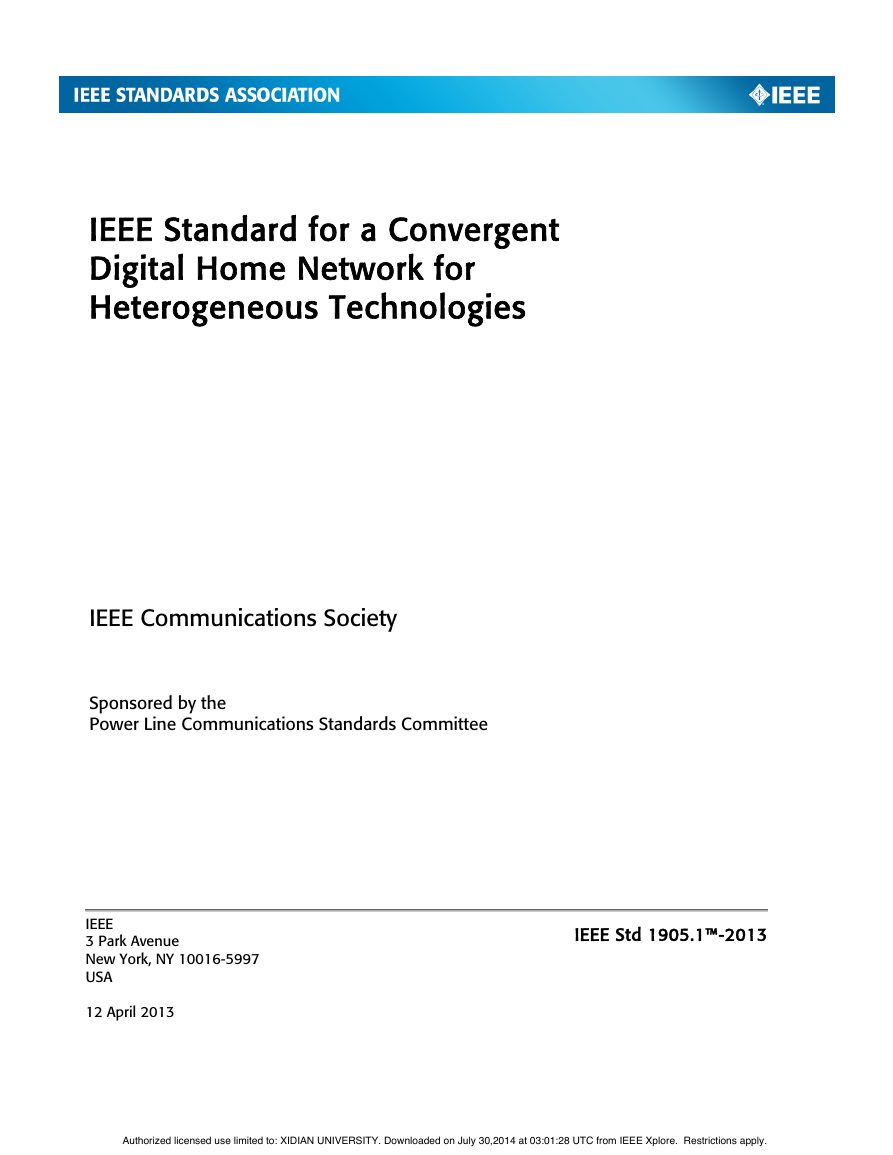

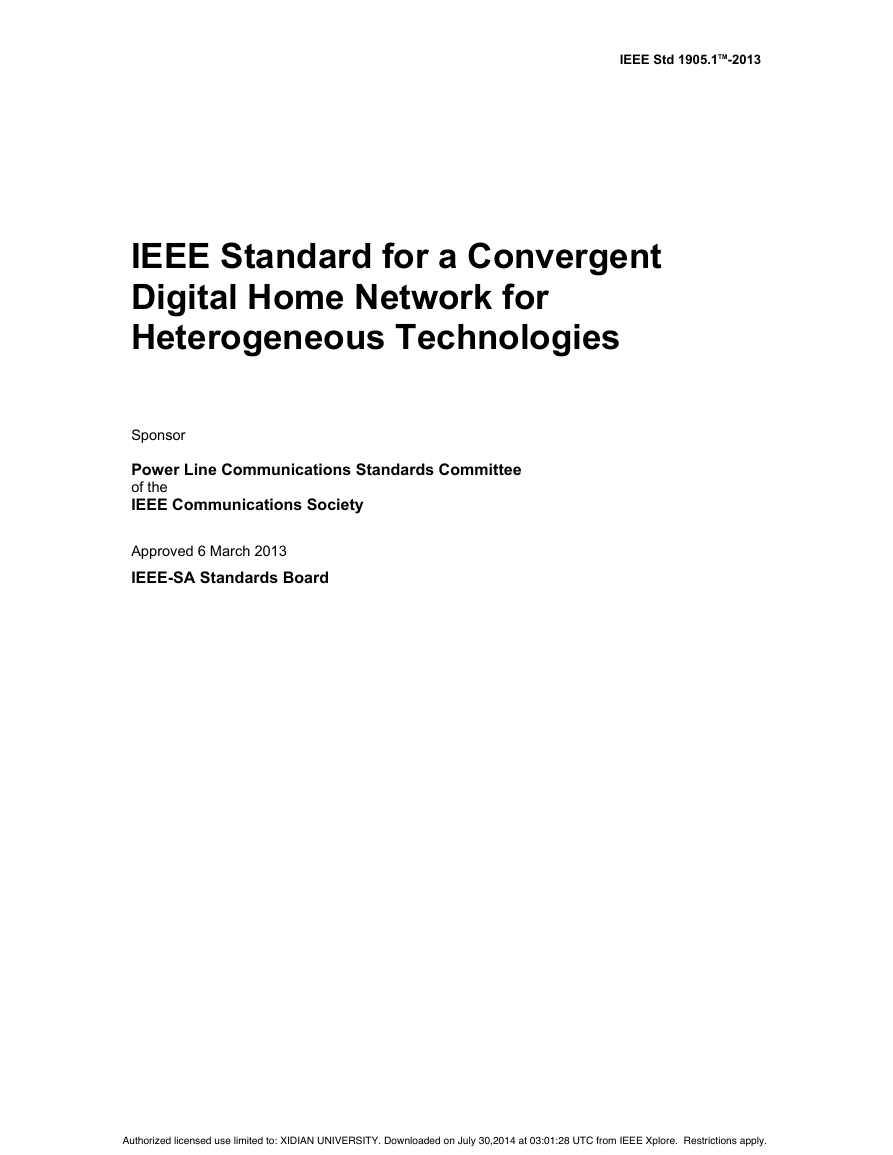

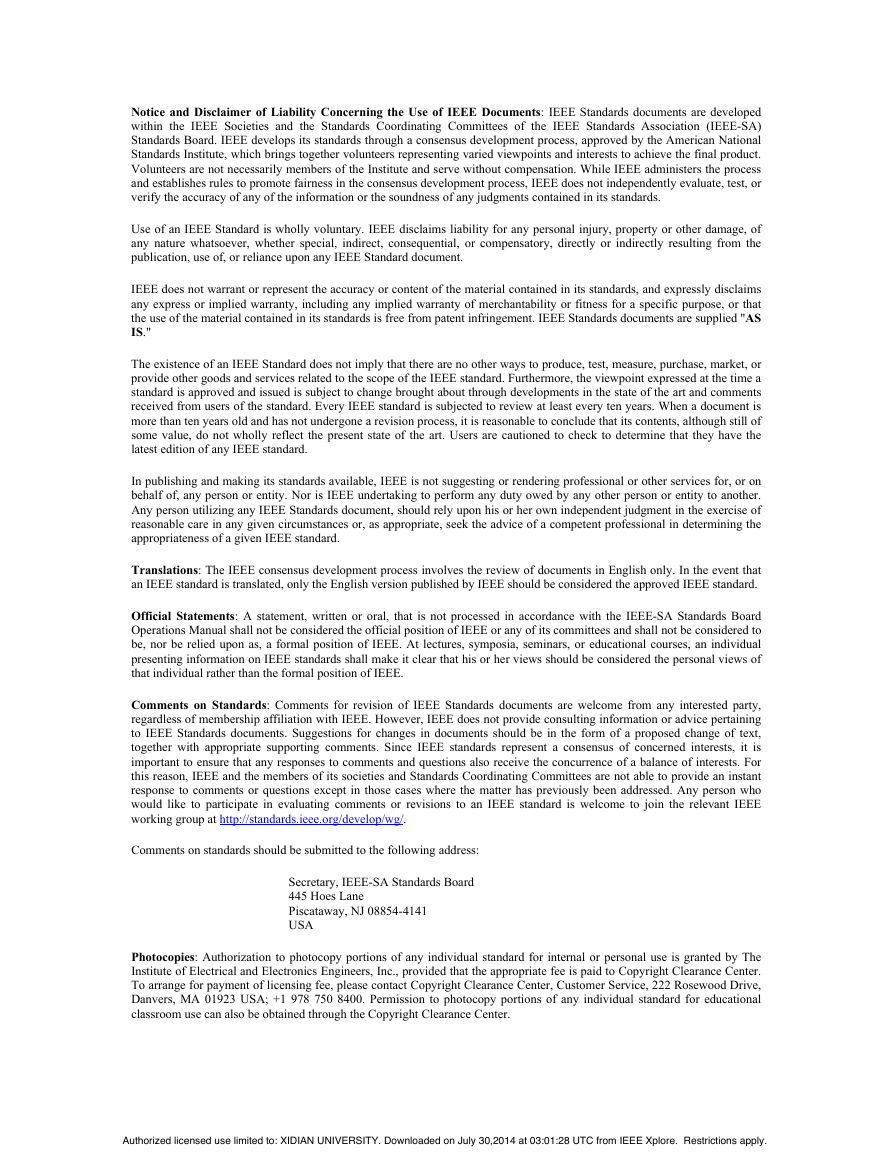
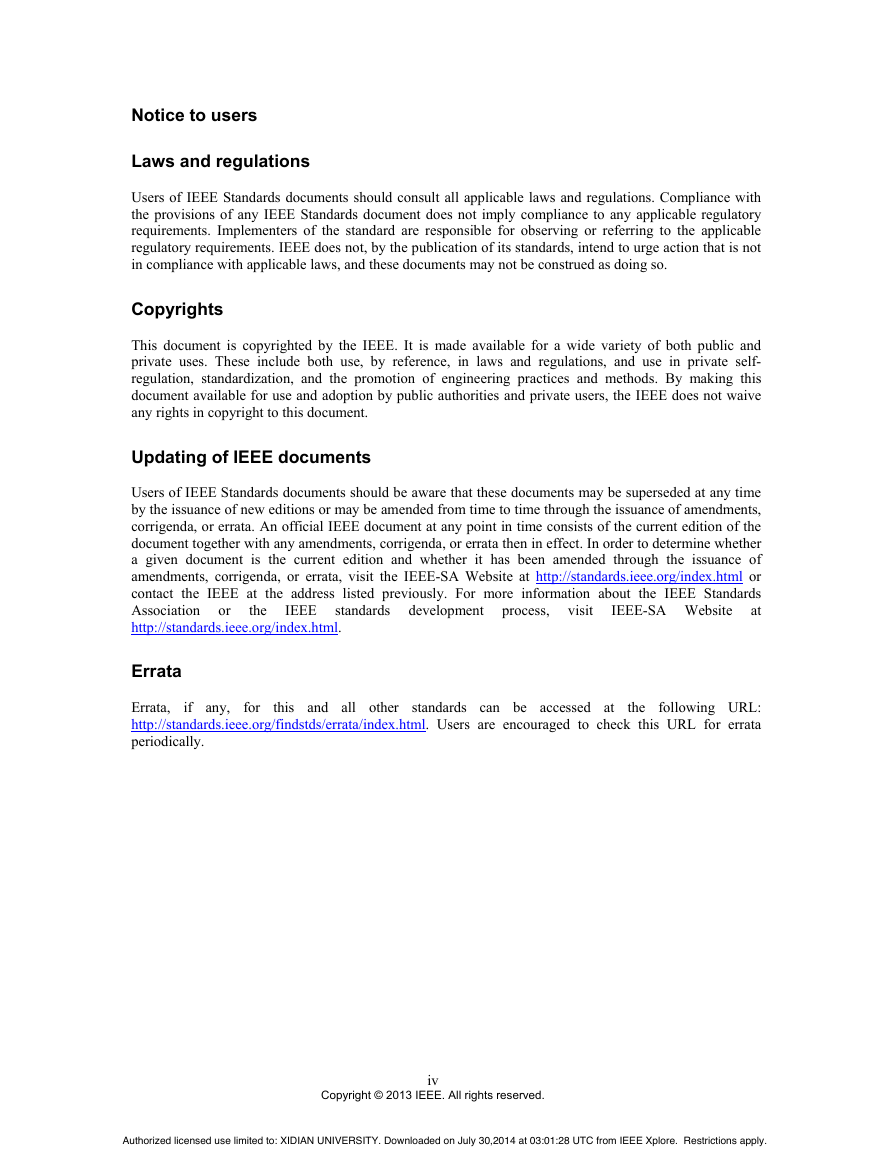
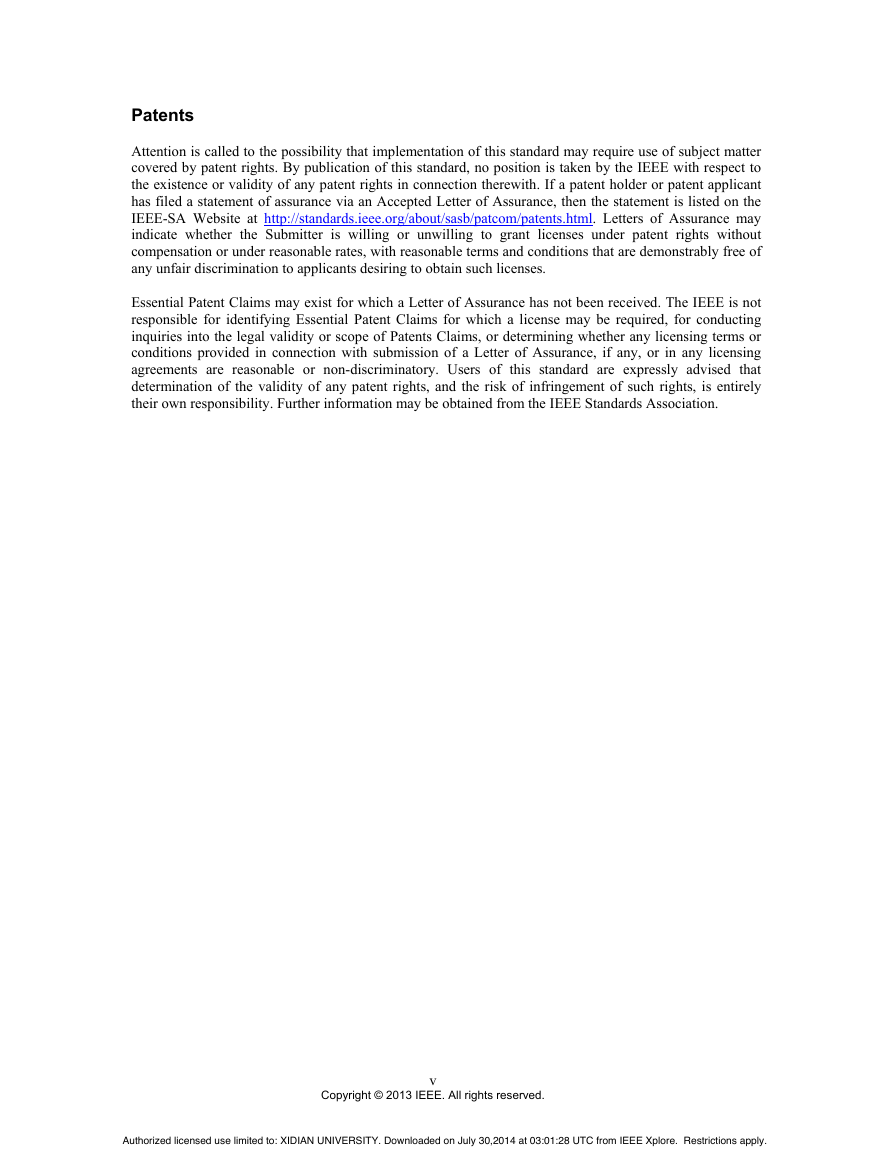
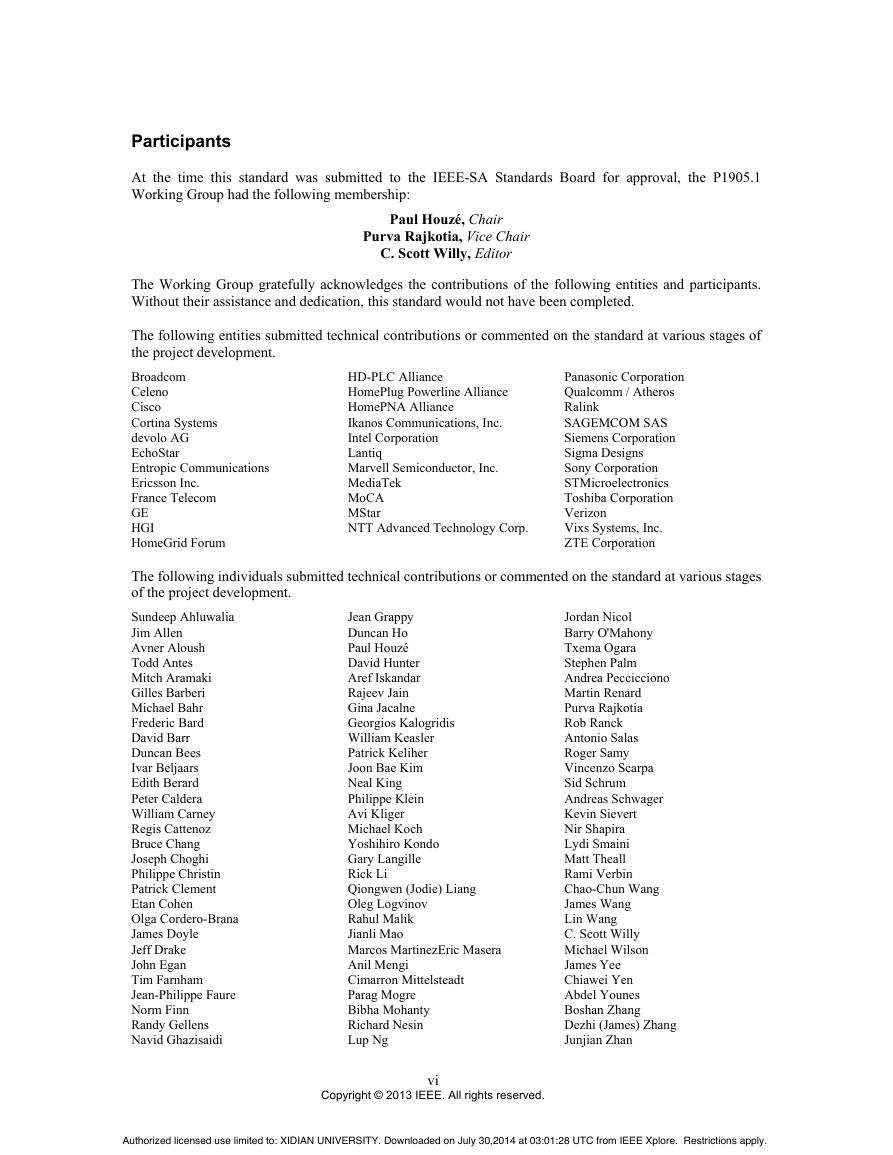








 2023年江西萍乡中考道德与法治真题及答案.doc
2023年江西萍乡中考道德与法治真题及答案.doc 2012年重庆南川中考生物真题及答案.doc
2012年重庆南川中考生物真题及答案.doc 2013年江西师范大学地理学综合及文艺理论基础考研真题.doc
2013年江西师范大学地理学综合及文艺理论基础考研真题.doc 2020年四川甘孜小升初语文真题及答案I卷.doc
2020年四川甘孜小升初语文真题及答案I卷.doc 2020年注册岩土工程师专业基础考试真题及答案.doc
2020年注册岩土工程师专业基础考试真题及答案.doc 2023-2024学年福建省厦门市九年级上学期数学月考试题及答案.doc
2023-2024学年福建省厦门市九年级上学期数学月考试题及答案.doc 2021-2022学年辽宁省沈阳市大东区九年级上学期语文期末试题及答案.doc
2021-2022学年辽宁省沈阳市大东区九年级上学期语文期末试题及答案.doc 2022-2023学年北京东城区初三第一学期物理期末试卷及答案.doc
2022-2023学年北京东城区初三第一学期物理期末试卷及答案.doc 2018上半年江西教师资格初中地理学科知识与教学能力真题及答案.doc
2018上半年江西教师资格初中地理学科知识与教学能力真题及答案.doc 2012年河北国家公务员申论考试真题及答案-省级.doc
2012年河北国家公务员申论考试真题及答案-省级.doc 2020-2021学年江苏省扬州市江都区邵樊片九年级上学期数学第一次质量检测试题及答案.doc
2020-2021学年江苏省扬州市江都区邵樊片九年级上学期数学第一次质量检测试题及答案.doc 2022下半年黑龙江教师资格证中学综合素质真题及答案.doc
2022下半年黑龙江教师资格证中学综合素质真题及答案.doc